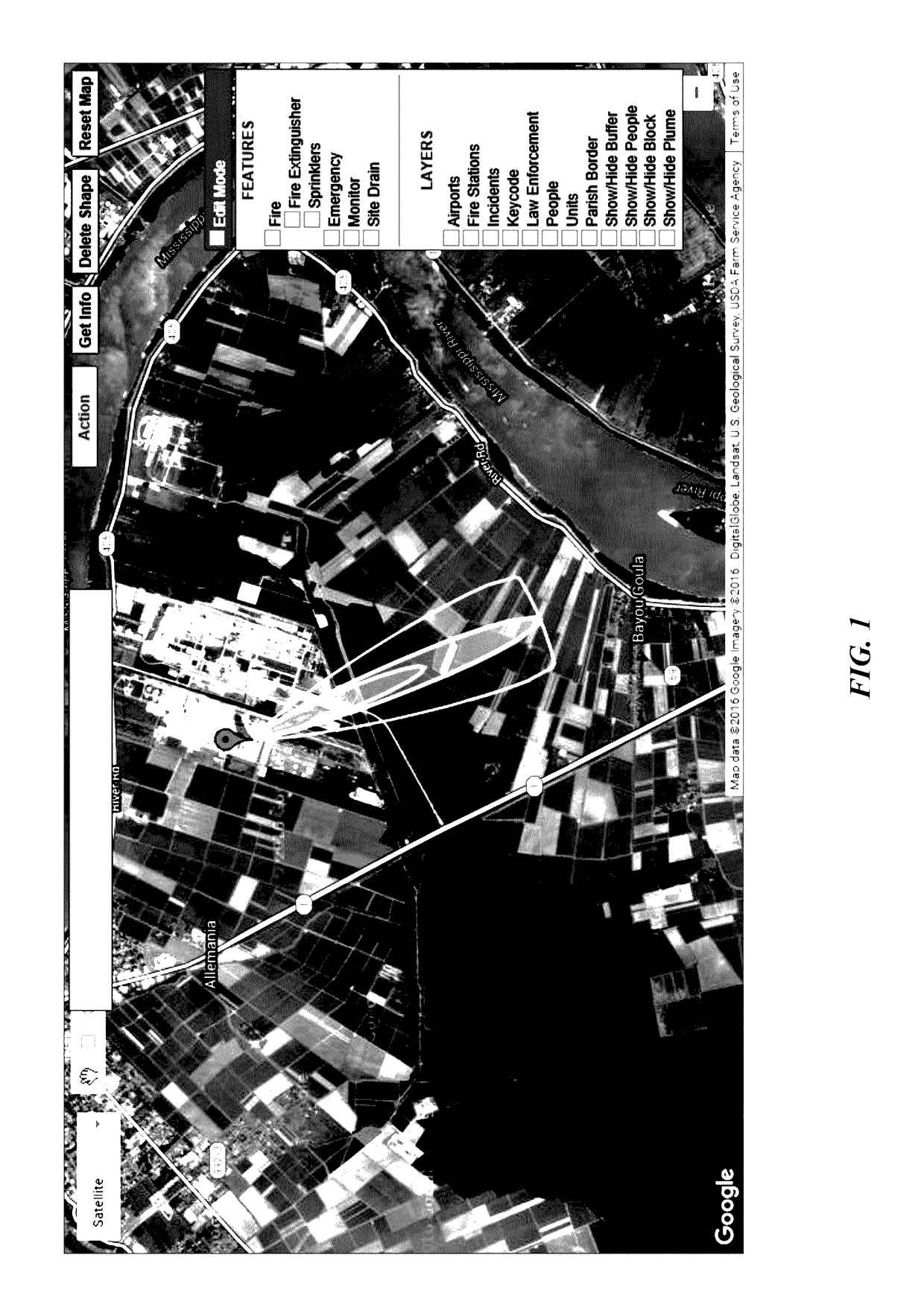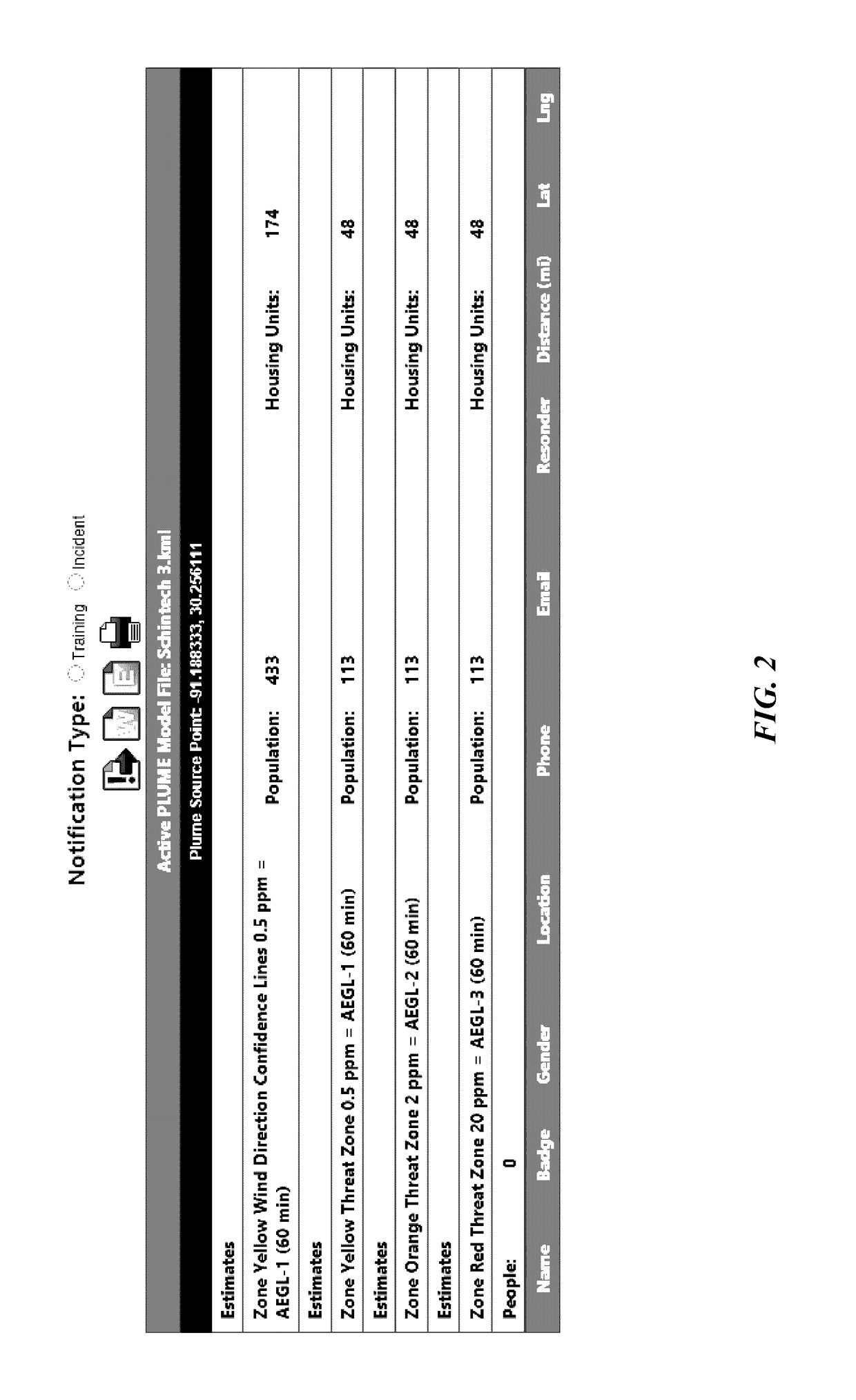Real-time presentation of geolocated entities for emergency response
- Summary
- Abstract
- Description
- Claims
- Application Information
AI Technical Summary
Benefits of technology
Problems solved by technology
Method used
Image
Examples
example 1
Response
[0043]In certain embodiments, the current invention is a system and methodology for extracting and displaying real-time geographical and situational details on-site, as used / operated by first responders and emergency personnel in incidence responses. The system relies on a wireless network (e.g., cellular network), Internet connection, or other network connection to provide instant access to information pertaining to the underlying incident and the response thereto. The system enhances the user / operator's capability to quickly detect, record, and share response activities and tasks in real-time.
[0044]The system and methodology displays an aerial dispersal model (e.g., ALOHA plume) containing a plurality of informational layers underlying the plume, where the system overlays the plume on a web mapping service for user visualization. The information includes, but is not limited to, population, housing, public facilities, demographics, transportation systems and roadways, and i...
example 2
intenance
[0052]The system can also provide data in real-time for a safety audit. Generally, rather than presenting data and entities under a plume as in Example 1, the current system can present the same information under a preselected area on a map for audit / maintenance purposes. It has entity maintenance features that aid in providing up-to-date, accurate information for the underlying entities / features. A user can input a particular area on the map (e.g., drawing an enclosed region on GOOGLE MAPS), and the underlying entities / features can be seen, maintained, and updated. Data for emergency features, for example including, but not limited to, the locations of fire hydrants, fire extinguishers, hoses, valves, pipelines, etc., can be managed and maintained within the system. As an example, a building's floorplan or other infrastructure, as inputted or imported by the user, can be visualized, such that particular incidences (e.g., slip and fall accidents in a hospital setting) and o...
example 3
sed Response
[0056]FIGS. 7, 8, and 9A-9B depict the system components used to accomplish the functionality described previously, specifically displaying in real-time geographical and situational details on-site underneath a conveyed or preselected region displayed on a web mapping service. System server 10 is a computer device that provides functionality for other client devices. In certain embodiments, the web-based architecture of the current system adheres to a client-server model, and a single overall computation is distributed across multiple devices. System server 10 provides various functionalities and services, including, but not limited to, sharing data and resources among multiple client devices and performing computations for a client device. System server 10 can serve multiple clients simultaneously, thus sharing data in real-time. Other than this computational functionality, system server 10 also hosts the database that stores all data required for the current operation....
PUM
 Login to View More
Login to View More Abstract
Description
Claims
Application Information
 Login to View More
Login to View More - R&D
- Intellectual Property
- Life Sciences
- Materials
- Tech Scout
- Unparalleled Data Quality
- Higher Quality Content
- 60% Fewer Hallucinations
Browse by: Latest US Patents, China's latest patents, Technical Efficacy Thesaurus, Application Domain, Technology Topic, Popular Technical Reports.
© 2025 PatSnap. All rights reserved.Legal|Privacy policy|Modern Slavery Act Transparency Statement|Sitemap|About US| Contact US: help@patsnap.com



